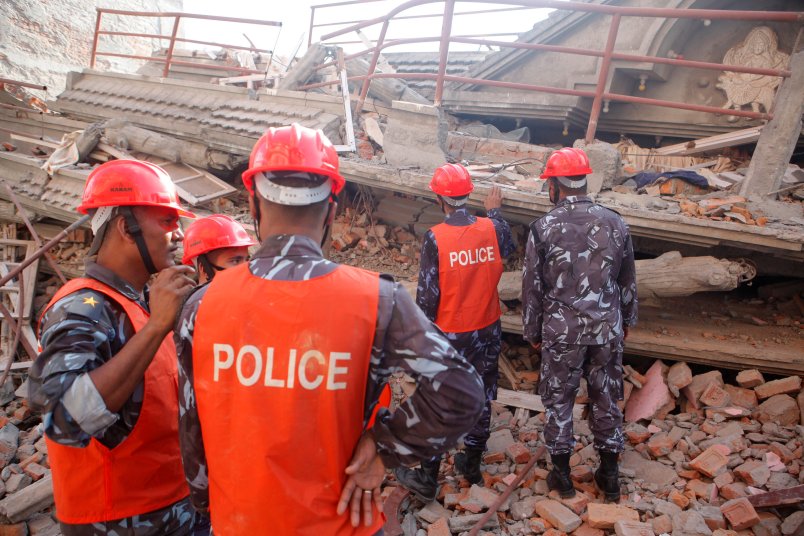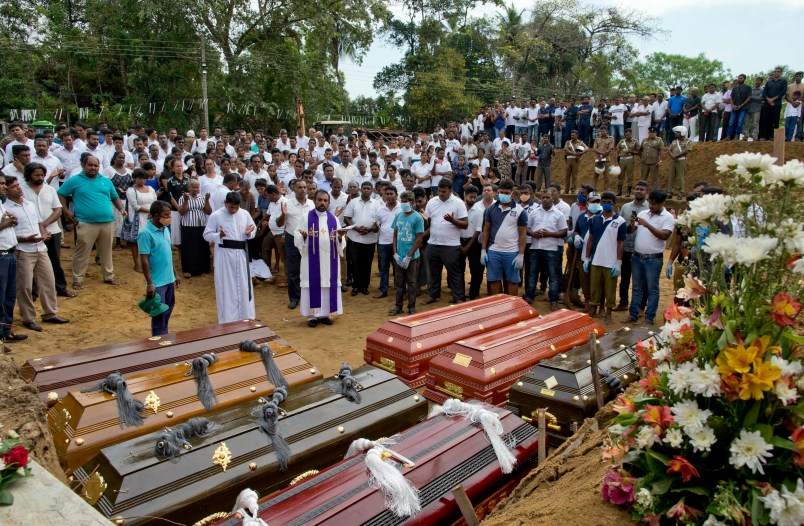KATHMANDU, Nepal (AP) — A major earthquake hit a remote mountain region of Nepal on Tuesday, killing at least 42 people, triggering landslides and toppling buildings less than three weeks after the Himalayan nation was ravaged by its worst quake in decades.
The magnitude-7.3 quake hit hardest in districts northeast of the capital and terrified a nation already shell-shocked and struggling after a more powerful quake on April 25 killed more than 8,150 and flattened entire villages, leaving hundreds of thousands homeless.
Information was slow to reach Kathmandu after Tuesday’s quake, but officials and aid workers said they expected the death toll to rise. Within a few hours, the Home Ministry confirmed that at least 42 people had been killed and at least 1,117 injured.
Meanwhile, it said rescuers had managed to pull three people to safety in the capital, while another nine were rescued in the district of Dolkha.
Rescue helicopters were sent to mountain districts where landslides and collapsed buildings may have buried people, the government said. Home Ministry official Laxmi Dhakal said the Sindhupalchowk and Dolkha districts were the hardest hit.
Search parties fanned out to look for survivors in the wreckage of collapsed buildings in Sindhulpalchowk’s town of Chautara, which has become a hub for humanitarian aid since the magnitude-7.8 quake on April 25 — Nepal’s worst recorded earthquake since 1934.
Tuesday’s quake was deeper, however, coming from a depth of 18.5 kilometers (11.5 miles) versus the earlier one at 15 kilometers (9.3 miles). Shallow earthquakes tend to cause more damage.
The Tuesday quake was followed closely by at least eight strong aftershocks, according to the U.S. Geological Survey.
The international airport in Kathmandu, which has become a transport hub for international aid, was closed briefly after Tuesday’s quake, while traffic snarled in the streets of the capital.
Early reports indicated at least two buildings had collapsed in Kathmandu, though at least one had been unoccupied due to damage it sustained during the April 25 quake. Experts say the April 25 quake caused extensive structural damage even in buildings that did not topple, and that many could be in danger of future collapse.
Frightened residents who had returned to their homes only a few days ago were once again planning to sleep outdoors in empty fields, parking lots and on sidewalks Tuesday night.
“The shaking seemed to go on and on,” Rose Foley, a UNICEF official based in Kathmandu, said after the latest quake. “It felt like being on a boat in rough seas.”
Aid agencies were struggling to get reports from outside of the capital.
“We’re thinking about children across the country, and who are already suffering. This could make them even more vulnerable,” Foley said.
Residents of the small town of Namche Bazaar, about 50 kilometers (35 miles) from the epicenter of the latest quake and a well-known spot for high-altitude trekkers, said a couple of buildings damaged in the earlier earthquake collapsed Tuesday. However, there were no reports of deaths or injuries in the town.
Meanwhile, new landslides blocked mountain roads in the district of Gorkha, one of the most damaged regions after the April 25 quake.
“People are terribly scared. Everyone ran out in the streets because they are afraid of being inside the houses,” Norwegian Red Cross Secretary-General Asne Havnelid told Norwegian broadcaster NRK.
At Kathmandu’s Norvic Hospital, patients and doctors rushed to the parking lot.
“I thought I was going to die this time,” said Sulav Singh, who rushed with his daughter into a street in the suburban neighborhood of Thapathali. “Things were just getting back to normal, and we get this one.”
Nepalese have been terrified by dozens of aftershocks that followed the April 25 quake. The impoverished country has appealed for billions of dollars in aid from foreign nations, as well as medical experts to treat the wounded and helicopters to ferry food and temporary shelters to hundreds of thousands left homeless amid unseasonal rains.
Paul Dillon, a spokesman with the International Organization for Migration, said he saw a man in Kathmandu who had apparently run from the shower with shampoo covering his head. “He was sitting on the ground, crying,” Dillon said.
Strong shaking was also felt across northern India, with at least three people killed when rooftops or walls collapsed on them in the state of Bihar. The state’s disaster management secretary said the deaths occurred in the districts of Patna, Vaishali and Darbhanga, just across from Nepal’s southern border.
The earth also rattled across the Nepalese border in Tibet’s Jilong and Zhangmu regions, and slight tremors were felt in the Tibetan capital, Lhasa.
“Rocks fell from the mountains,” Jilong county government vice chief Wang Wenxiang was quoted as saying by China News Service. “There might be some houses collapsed or damaged.” Authorities were assessing the damage further.
___
Daigle reported from New Delhi. Associated Press writers Tim Sullivan in New Delhi, Indrajit Singh in Patna, India, Ian Mader in Beijing and Jan M. Olsen in Copenhagen, Denmark, contributed to this report.
Copyright 2015 The Associated Press. All rights reserved. This material may not be published, broadcast, rewritten or redistributed.









